Style
‘Great Design Dovetails Into Sculpture’: Carpenters Workshop’s Ashlee Harrison on How to Convince Art Collectors to Spend Big on Design
Harrison spoke about curating and collecting what she calls "functional sculpture."
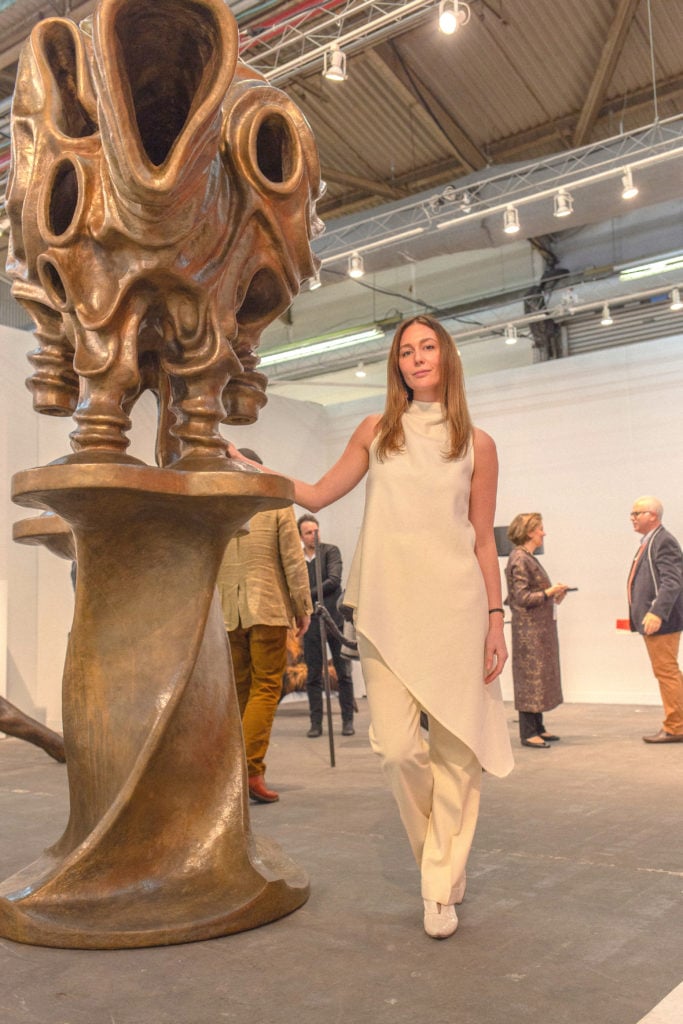
Harrison spoke about curating and collecting what she calls "functional sculpture."

Noor Brara

There are few women in the design world who are shaking up the field as much as the Carpenters Workshop director Ashlee Harrison, who—before she even turned 30—was tapped by the Paris and London gallery’s founders Loïc Le Gaillard and Julien Lombrail to start up their first stateside venture in New York in 2015.
Now, just six years later, Carpenters Workshop New York has become one of the country’s most cutting-edge design galleries, known for offering “functional sculpture,” or objects that successfully straddle the line between art and design, conceived by a roster of renowned (and often multi-hyphenate) figures such as Maarten Baas, Virgil Abloh, Studio Drift, the Campana Brothers, and the late Karl Lagerfeld.
Coming out of lockdown, the profile of collectible design is at a high: auction houses have reported fresh demand for design objects from Asia and new records are being set at design sales in New York. We spoke with Harrison ahead of Carpenters Workshop’s joint summer exhibition in Southampton with Christie’s and Aspen pop-up with art gallery Lehmann Maupin to find out what’s behind the growing design market, how she’s navigated between the art and design worlds, and what kind of work she likes to live with at home.
Tell me a little about your background. Were you drawn to design from a young age?
I’m originally from New Hope, Pennsylvania. My grandfather was an architect, so I think that had some influence on my interest in design and spatial relationships. New Hope is a town where a lot of midcentury designers—Paul Evans, Phillip Lloyd Powell, George Nakashima—lived and had their studios. So by default, I was always around design, in the way it’s viewed as something collectible or something celebrated, as sculpture.
In college, I did some internships in New York in fashion, because that’s really where my program [art history, design, and merchandising at Drexel University] was pushing us to go. I decided fashion wasn’t for me. I appreciated it, but I wanted to get back into the fine arts spectrum.
I graduated in 2007 and moved to Miami. My first job was in PR at Saks Fifth Avenue, and I ended up really liking the cultural scene down there. One day, an opportunity came about to take on a marketing director position at the D&D building in Miami. I was really young—23—and always tried to pull fine art into our programming and marketing at the showrooms we worked with. My whole focus was really educating interior designers on collectible design and the importance of viewing design as a sort of art on its own.
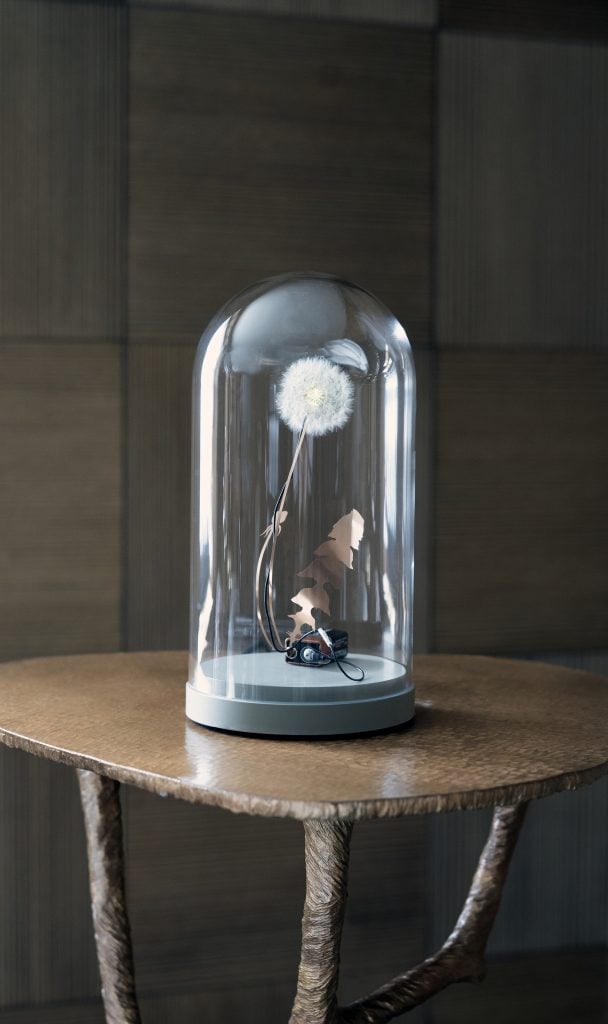
Harrison’s Studio Drift’s “Dandlelight” (2016). Photo courtesy Ashlee Harrison.
That sounds like a cool gig.
It was. But eventually, I realized I didn’t want to do marketing for what was essentially a real estate venture, and I got a call from Design Miami, who had an open position for external relations. That’s where I really feel like I began to find my footing. My job was to identify the audiences that would want to buy design… and really, they were art collectors.
At the time, 15 years ago, a small percentage of art collectors actually collected design, as well as interior designers and architects of a certain level. Art advisors were just starting to consider design as another medium. When I left Design Miami, I intended on starting my own consulting company.
Obviously, that changed. I met Loïc and Julien [the founders of Carpenters Workshop] at a fair. I approached Julien and said, “Why don’t we do something in New York? I love your program, there’s nothing like it in the States.” That somehow very quickly turned into, “We want you on board and we want you to open up an office for us in the States,” and at the time, I was like, “I don’t do sales, I don’t know how to do this. I can introduce you to a lot of collectors and I know a lot of designers and I can do business development, but I don’t know how to, you know, run a gallery.” [laughs]
But Julien I guess really believed in me. That was around 2014, and they wanted to have a space that was more like a salon or apartment where we could do client meetings and host viewings. We got our space on Fifth Avenue after I explained to my friend [in real estate] what we needed—a place to show collectible sculpture, that’s how we positioned it—and I’m still here.
You mentioned your love of art and artists just now. I know you’re particularly passionate about developing emerging artists and bringing them to the gallery. Can you tell me a little about that?
We work with a number of established artists like Ingrid Donat or the Campana Brothers, but both myself and the gallery at large are drawn to supporting young talent.
We see that in Europe a lot—we have Martin LaForet, whose mentor and professor in school was [fellow gallery artist] Maarten Baas. There is a lot of that kind of mentorship happening in Europe.
I really wanted to take the mode of our European program and bridge it to the U.S., because there are a lot of similarities in terms of the rising talent. I think what defines us as a gallery is, yes, the work has to be functional sculpture—that’s sort of what we call it—but it also has to have strong craftsmanship and it has to be innovative, either in process or in technology. It has to have a very strong starting point from a sculptural point of view, and a very strong narrative. So if all of those pillars are checked, then it’s something we respond to.
What I’m developing right now is a show identifying who the next generation is—it’s a really authentic way of being able to inject more diversity into the design world and give these young talents a platform. We’re commissioning each artist to do a capsule collection; eight finalists will be included [in the show] and we’re giving them stipends to fund the production. What’s especially great for me is that out of the eight participants, seven are women, who we chose purely based on their work. That’s exciting given how male dominated design history is.
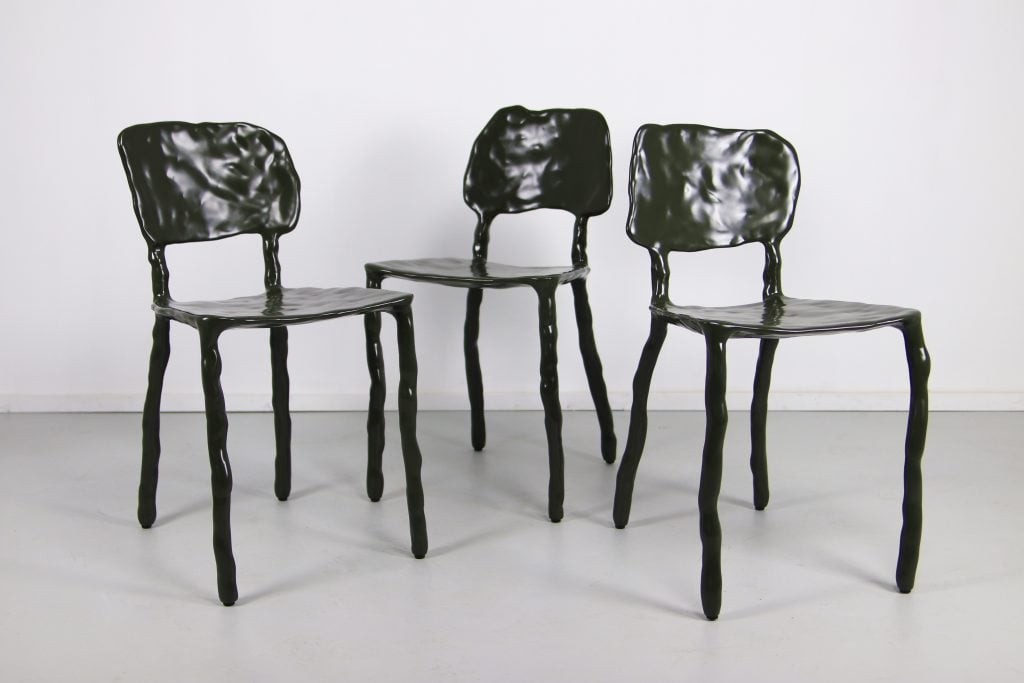
A set of clay chairs by Marten Baas, designed for Harrison. Photo courtesy Ashlee Harrison.
I wanted to ask you too about the kinds of things you like to collect on a personal level. What do you like to live with?
I’m pretty all over the place, and I’d say what drives me is a visceral reaction. I do also consciously, every year and with a limited budget, invest in one design piece from the gallery and one piece of art. I plan for that every year.
When I moved into my new apartment, I was like, “I need dining chairs.” I asked Maarten Baas if he’d do a set of clay dining chairs for me—this was about six or seven years ago—and I still love them. They’re so fun and playful and ergonomic and comfortable.
In terms of art, the first piece I ever got was one of Jose Davila’s cutouts. I guess everything in my house is fun and playful and unserious, because when I come home I want to relax and let my guard down. I never really think about the market [when collecting]. You don’t want to waste your money, but it’s more about supporting the artist and loving their work than anything else.
Do you have any advice for young collectors who are just starting to collect or thinking about collecting?
A lot of times we have clients who are decorating their homes, so they come in and say they need a coffee table, they need a chair. Then they’ll see an installation by Studio Drift and they realize it’s more of an acquisition than a straightforward purchase. People can get overwhelmed, and I want to tell them you don’t have to buy everything all at once. You can collect over time, and that’s a better way to live in your space than to get everything and change it out.
And it doesn’t all have to be collectible. When I first moved into my apartment, I had a ton of vintage furniture and things that I found at CB2 and mixing it together on a fixed budget was important. You’re connecting to each piece mindfully, a piece that represents a time in your life, and over the years, it becomes, somehow, a collection. And you know, the more you see, the more your taste develops, which is important.
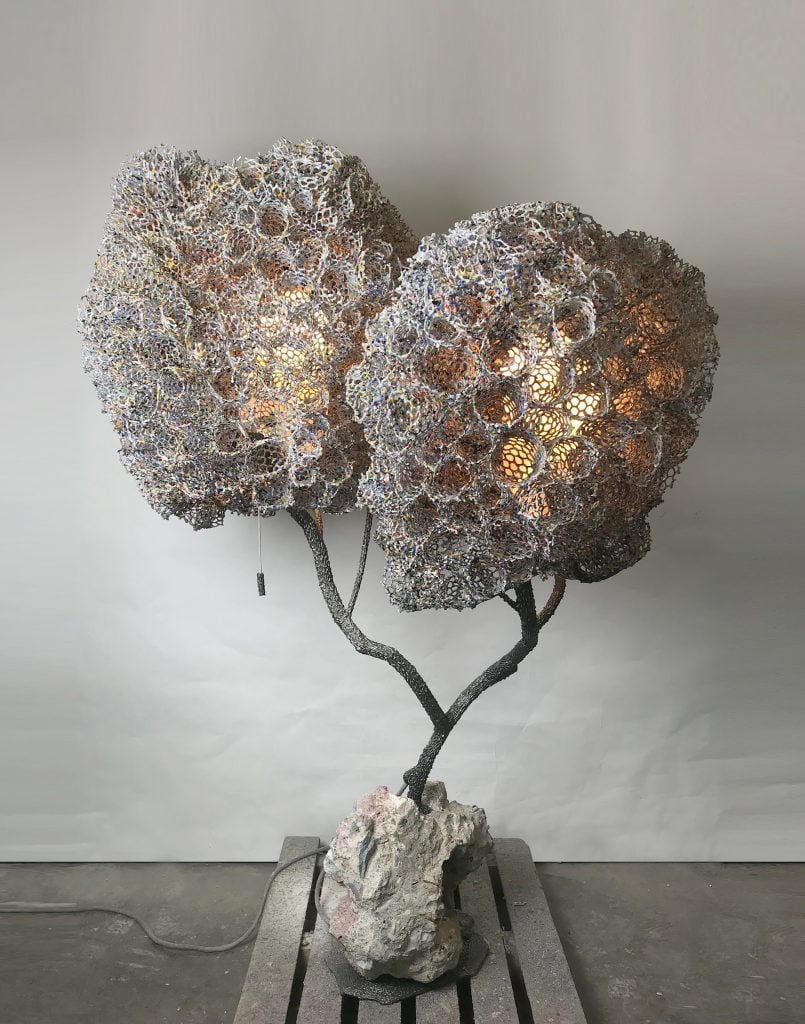
Nacho Carbonell, “Balls Tree” (2019) will appear in Carpenters Workshop gallery’s summer exhibition with Lehmann Maupin. Photo courtesy Carpenters Workshop.
Carpenters Workshop is unique I think because it’s one of the design galleries that has most effectively been able to reach fine art collectors, especially young fine art collectors who are sort of paving the way for the art world of the future. That said, how do you explain the value of design to people who are more versed in fine art? How do you turn art collectors into design collectors?
Historically, there’s been a hierarchy and that’s no secret. Painting is sort of up here and then you have sculpture, and then video art used to be in question, and photography was considered craft, and architecture was the cousin, and design was the red-headed stepchild.
I always used to wonder about it in college, like why is design not considered just another medium of expression? Especially when you consider the kinds of artists we work with, and I do call them artists, because that’s what they are. Just because their work is functional doesn’t make it less interesting or less complex. And in terms of the difference between good design and great design, good design is good design—it has all of the problem-solving principles, which you recognize—but I think great design dovetails into sculpture.
I hope that when you walk into our gallery, the work makes you wonder. It’s a kind of sensational experience which doesn’t necessarily have to be beautiful. Atelier Van Lieshout creates work around intense social topics and functionality comes second, for example. But… you can put your glass on it. It can be your coffee table. It’s just that the approach is so profoundly sculptural and you don’t dismiss the design aspect of it because that’s another layer that adds to the complexity. And that’s not to say that design is more sophisticated than art, but there is that additional expectation that you have to meet. It’s not only “How will this survive archivally?” But also, “How does it wear, how do you live with it? How do you feel when you sit in it?” That requires a lot of work and a whole lot of consideration.
Right. I think functionality isn’t considered as boring or as lowly anymore, or something that stands in for what is essentially a lack of true artistic value… in fact, there’s a sort of romance to functionality these days, in many ways.
I agree. And I mean, if you think of a lot of blue-chip collectors, they’re thinking about how to build environments on the whole. If you have something on the level of an Andy Warhol on a wall, the objects that surround it should be able to meet that. I think in the last year, people are even more sensitive to that. It’s crazy now, what the design sales are fetching.
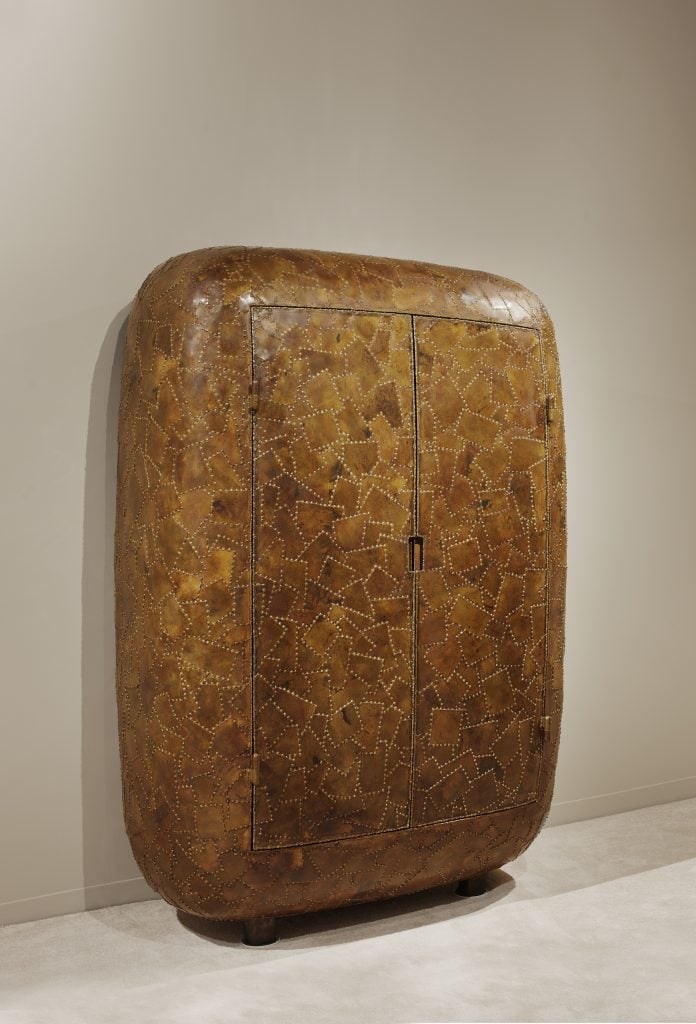
Maarten Baas, “Carapace Cupboard Bronze with Bar and Fridge” (2021). Photo courtesy Carpenters Workshop.
What do you think the design world will look like in 10 or 20 years? Do you think, in the future, there will be less delineation between art and design?
I absolutely think that that’s the future and I think it’s happening now, too. A lot of artists—and there’s always been some amount of this, you can look back at Donald Judd-made furniture and Calder-made jewelry—are focused on this egalitarian breaking of boundaries where creators are just creating. Work is becoming more fluid and collectors are responding to that. If you look at the way museums are curating their galleries, you’ll have, say, a [Ettore] Sottsass cabinet and a [Eddie] Sotto painting paired next to each other. There’s a lot of cross-industry dialogue that curators are pushing, and I think that old vision by which time and effort was spent enforcing barriers is starting to dissipate.